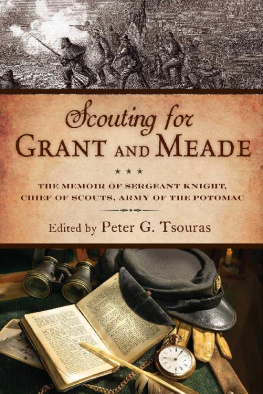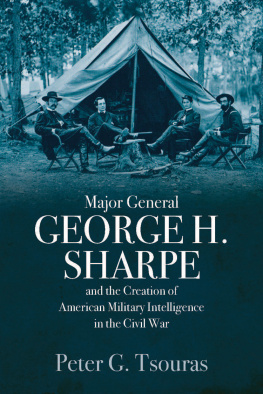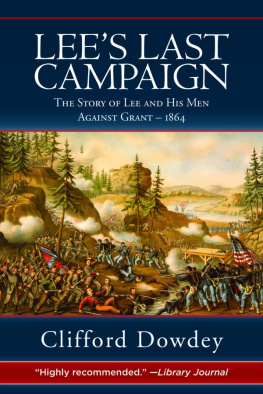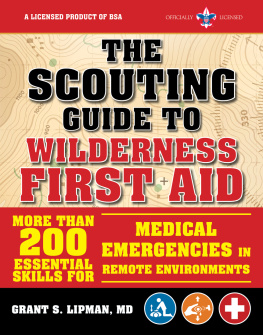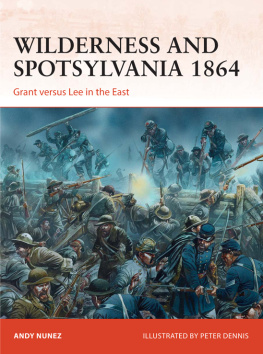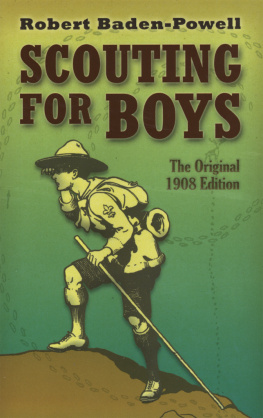Copyright 2014 Peter G. Tsouras
All Rights Reserved. No part of this book may be reproduced in any manner without the express written consent of the publisher, except in the case of brief excerpts in critical reviews or articles. All inquiries should be addressed to Skyhorse Publishing, 307 West 36th Street, 11th Floor, New York, NY 10018.
Skyhorse Publishing books may be purchased in bulk at special discounts for sales promotion, corporate gifts, fund-raising, or educational purposes. Special editions can also be created to specifications. For details, contact the Special Sales Department, Skyhorse Publishing, 307 West 36th Street, 11th Floor, New York, NY 10018 or .
Skyhorse and Skyhorse Publishing are registered trademarks of Skyhorse Publishing, Inc., a Delaware corporation.
Visit our website at www.skyhorsepublishing.com.
10 9 8 7 6 5 4 3 2 1
Library of Congress Cataloging-in-Publication Data is available on file.
ISBN: 978-1-62873-698-4
Printed in the United States of America
DEDICATION
This book is dedicated to the memory of Judson Knight
and to the scouts of the United States Army,
Men of Daring, Cunning, and Courage
CONTENTS
Foreword:
A Knights Tale
W ILLIAM B. F EIS
Author of Grants Secret Service: The Intelligence War from Belmont to Appomattox
A T THE END of the Civil War, Union General Philip H. Sheridan acknowledged the critical role his scouts played in the final campaigns when he thanked them for cheerfully going wherever ordered, to obtain that great essential of success, information. Though Sheridan certainly appreciated the contributions of his intelligence operatives and understood the innumerable difficulties and dangers they encountered trying to keep him informed, few inside or outside the army knew much at all about the intrepid men and women who sacrificed in the shadows for the Union cause.
Even today the true nature of Civil War military intelligence remains overshadowed by the overly romanticized tales spun by Confederate spies Rose ONeal Greenhow and Belle Boyd, and their Union counterparts Allan Pinkerton and Lafayette C. Baker. Their truth-challenged and blatantly self-promoting narratives stole the postwar limelight far more effectively than they absconded with enemy secrets. These tall tales, wrote intelligence historian Edwin C. Fishel, have been reworked again and again by popular biographers and historians until they have long since hardened into a mythology, or what he called the magnolia blossom school of Civil War intelligence.
In addition to the romantic haze enshrouding the literature, Civil War military intelligence operations also remain difficult to decipher because they were predominantly ad hoc affairs conducted with little precise record-keeping. Most commanders instinctively understood the need for information because, as Maj. Gen. Daniel Butterfield so eloquently put it, Union armies could not go boggling around until we know what we are going after. But no official manual or do it yourself guide existed telling how to find information while on campaign or how to use it once you found it. Complicating this inexperience, commanders also had access to a wide array of potential information sources, which could be both good and bad since too much information could be as confounding and bewildering as too little. As a result, most Civil War officerseven those with a West Point pedigreelearned the intelligence business on the job and pretty much made it up as they went along. Unfortunately, this also meant officers came to rely heavily upon their equally inexperienced information-gatherers to do their job well.
The most important of these operativesand the unsung workhorse of military intelligence operationswas the army scout. Usually a civilian or a volunteer from the ranks, these intrepid individuals ventured into no-mans-land seeking information on the enemy, returning (hopefully) to their commander/employer with firsthand observations, local rumors, enemy newspapers, captured mail, and reports on terrain, road networks, railroad traffic, troop deployments, and enemy morale. However, like many soldiers in the ranks, most scouts were military neophytes unschooled in warfare, combat operations, or army organization. This meant the ability to distinguish between a company and a division marching along a road, to effectively sort the signals from the noise, and to escape detection, time and again, would only come (if it did at all) while on the job. The knowledge that a hangmans noose awaited those unlucky enough to be captured, however, made becoming a quick study imperative.
Though most scouts probably served ably and well, employing them could pose unique challenges for information-hungry commanders. For example, the fact that an operatives pay depended upon the perceived value of the information brought in opened the process to abuse by individuals looking to scam the army for financial gain. Tall tales and outright lies, often extremely difficult to corroborate, could bring substantial remuneration if a dishonest scout could convince a commander they were true. Unfortunately, this sort of exploitation by a few miscreants only deepened suspicions of all scouts. As a general thing, complained one observer, scouts are perfectly worthless. They are usually plausible fellows who go out [just past] the picket line and lie on the ground all night under a tree, and come back to headquarters in the morning and lie there, giving wonderful reports about the enemy, fearing no contradiction. The very nature of Civil War scouting, therefore, could sow far more uncertainty than it dispelled. The antidote was to employ reliable individuals who were familiar with military organizations and operations, willing to risk death if captured, and driven by more pure motives than mere pecuniary gain. Enticed by the chance to escape the drudgery of camp and drill field but otherwise deeply committed to the Union cause, soldiers from the ranks often fit this bill rather well.
One of these recruits was Judson Knight, a New York native who enlisted in the Second New Jersey Volunteer Infantry in May 1861 and became a Union scout for Brig. Gen. Philip Kearny later that summer. A veteran of the Peninsula Campaign, the Seven Days, Second Bull Run, and Antietam, Knight fell ill after the fighting in Maryland and was discharged from the service at years end. Recovered by fall of 1863, Knight embarked upon what would be an extraordinarily productive career as a civilian scout, rising to the position of chief of scouts for the Army of the Potomacs intelligence arm, the Bureau of Military Information (BMI) headed by Col. George H. Sharpe. He participated in the 1864 Overland Campaign and settled in to scout for the Union armies besieging Richmond and Petersburg until Appomattox closed out his career.
When the shooting stopped, Knight picked up a pen and recounted his exploits in a series of articles published in The National Tribune, a postwar veterans periodical and forerunner of the Stars and Stripes . For example, his first installment set the tone for the remainder when he dealt with the question: How did you get inside of the enemys lines, and travel around there and get information, without being arrested? His answer provided a rare view into the workings of Sharpes BMI while on campaign. As with many of these postwar accounts, however, over time Knights reminiscences slipped from view. Thanks to Peter G. Tsouras, an accomplished historian and well-known author of a series of excellent counterfactual histories, Knights tale has been given new life. A labor of love, Tsouras collected and edited Knights National Tribune articles and spent years digging deeply into the BMI records at the National Archives in order to document and substantiateas much as possiblethe people, places, and events described by the former scout. This painstaking process entailed poring over hundreds of handwritten letters, reports, telegrams, and pay vouchers as well as mining a multitude of other mundane sources to piece together a puzzle with many missing pieces. Though Knight was undoubtedly a trustworthy fellow (Sharpe certainly thought so), the passage of time, the willful forgetting of unpleasant recollections or embarrassing blunders, and the desire to puff oneself for history, a common affliction of many postwar memoirists, could blur and distort memories until they eventually hardened into truth. Postwar memoirs written by secret operatives, moreover, pose even greater challenges since much of their business was done in secret and with minimal paper trails, making reliance on the shifting ground of memory a necessary evil. Believing in the adage trust but verify, Tsourass archival labors, judicious editing, and eye for detail uncovers where Knight crossed the line separating fact from fiction. This meticulous detective work gives texture, legitimacy, and greater historical value to the scouts recollections and for that we owe Tsouras a great debt.

